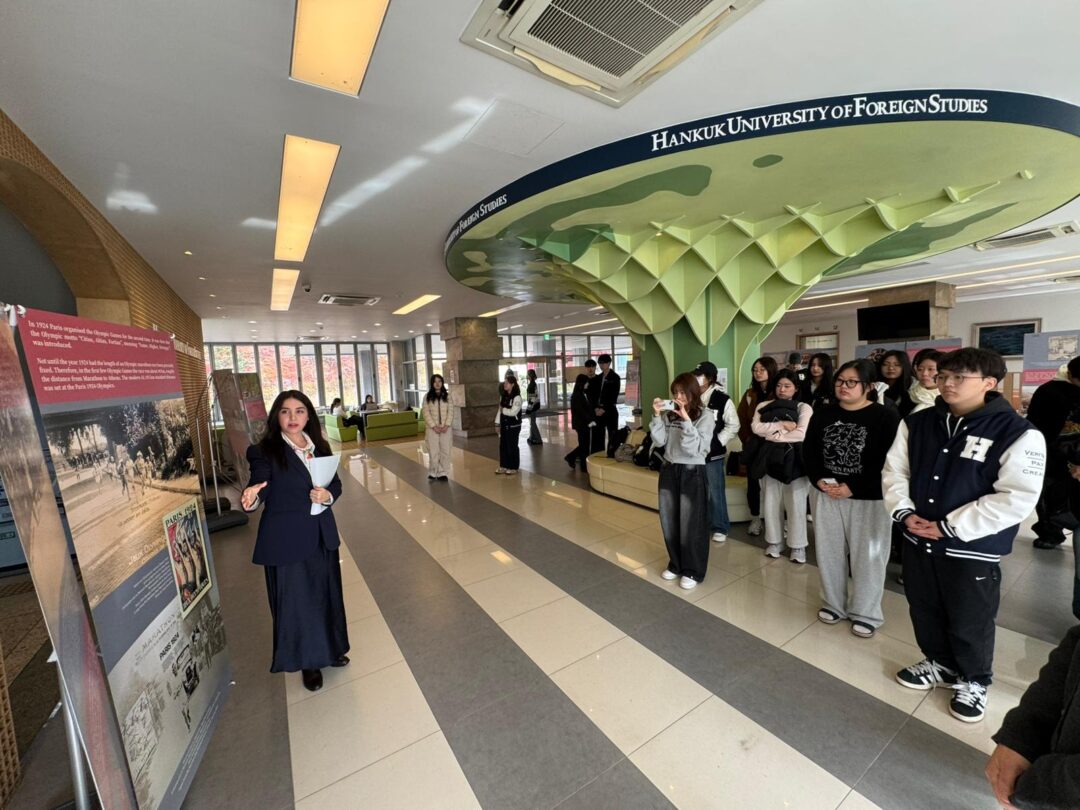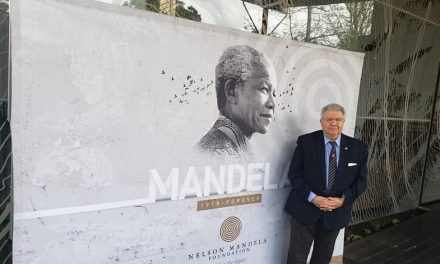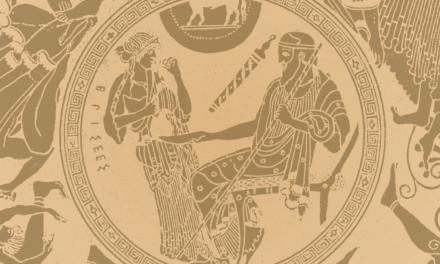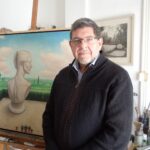The Olympic Games in Ancient Greece were an event of exceptional importance, since they were the foremost organized athletic activity. This event brought together the most distinguished athletes from all Greek city-states. The victory of an athlete was also a victory for the city he came from, while the winner’s reward was primarily of a moral nature and came from the glory and immortal fame that mortals acquired, as it was believed that the gods had assisted his victory.
Beyond the harmonious coexistence of body, soul, and spirit, the Olympic Games were a source of religious fervor, coupled with a historical awareness that stemmed from the heroic past.
But they also had political significance, as they sent a message of strong presence and unity with the participation of almost all cities. In order to ensure this universal participation, the Olympic Truce was created and implemented since the first Olympic Games in 776 BC, so that rival cities could participate in the great sporting event by suspending their conflicts.
Thus, the Truce began seven days before the start of the Games and lasted for seven days after their conclusion, so that the athletes could travel safely to ancient Olympia, compete in a peaceful environment, and return home safely.
In spring 2024, the 5th General Directorate of Public Diplomacy of the Ministry of Foreign Affairs, took the initiative to create an exhibition on the Olympic Truce, as part of its cultural diplomacy activities and overall strategic planning to promote the country’s image.
The exhibition, titled “The Olympic Ideal and the Truce, 776 BC – 2024: 2,800 years of history”, consists of 15 photographs presented in the form of banners.
Through the presentation of archaeological evidence and historical photographs, the history of the Olympic Games is illustrated, starting from antiquity and continuing with the revival of the Olympic movement at the end of the 19th century and the first modern Games in Athens in 1896, running through the 20th century and ending with the latest Summer Games in Paris in 2024.
The journey of the Exhibition
Ancient Olympia
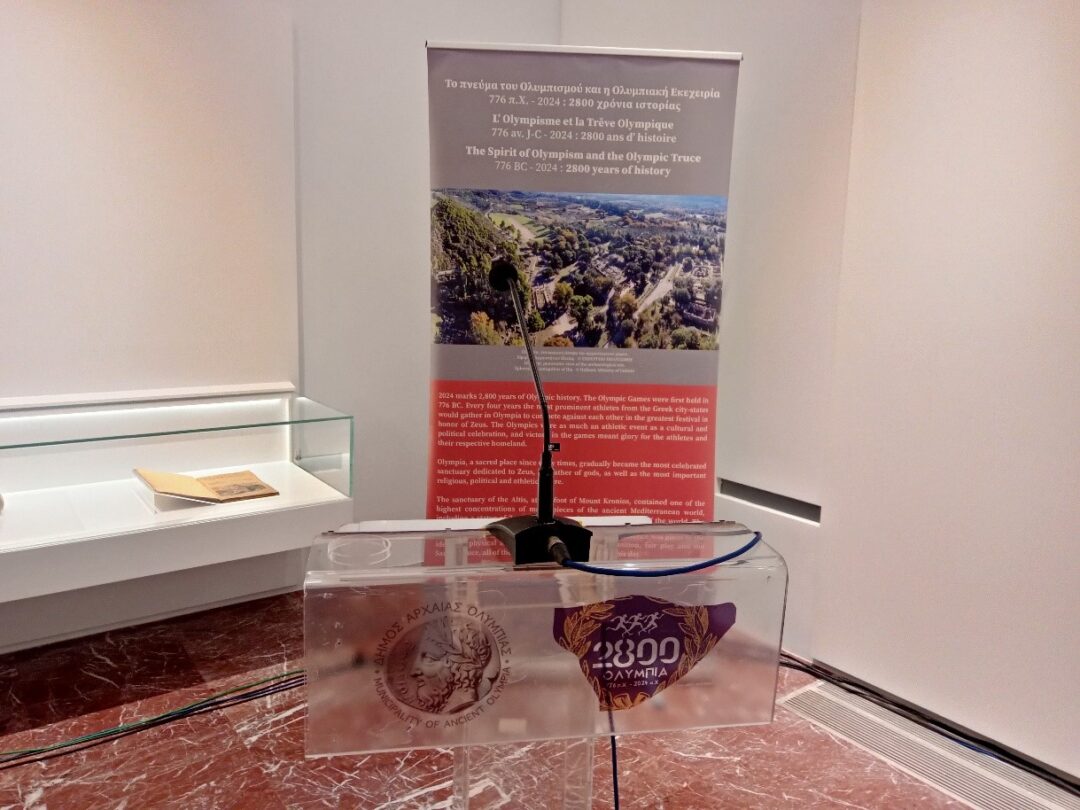
At the newly renovated Museum of the Modern Olympic Games in Ancient Olympia, one day before the Olympic Flame-Lighting Ceremony for the upcoming Winter Olympic Games “Milan-Cortina 2026,” the Municipalities of Ancient Olympia, Elis (Ilida), and Sparta signed the Olympic Truce (November 25).
In addition to the three mayors, the Truce was signed by, among others, the President of the International Olympic Committee, Ms. Kirsty Coventry, the President of the International Olympic Truce Centre, Mr. George Papandreou, the President of the Hellenic Olympic Committee, Mr. Isidoros Kouvelos, the Italian Minister of Sport and Youth, Mr. Andrea Abodi, the former President of the Italian Olympic Committee, Mr. Giovanni Malagò, the current President of the Italian Olympic Committee, Mr. Luciano Buonfiglio, the Ambassadors of Italy, Georgia, and Kazakhstan, the representative of the government, Deputy Minister of Education, Religious Affairs, and Sports, Mr. Giannis Vroutsis, and the representative of the Greek Ministry of Foreign Affairs, Ambassador Ms. Aikaterini Koika.
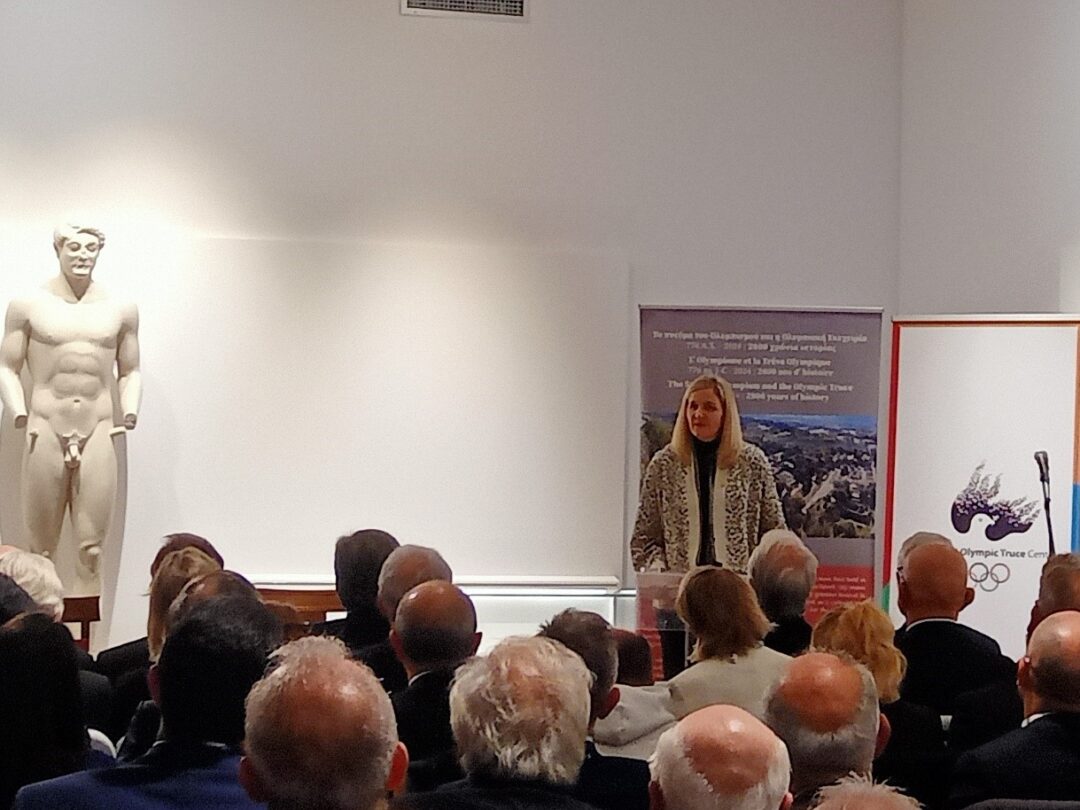

Athens
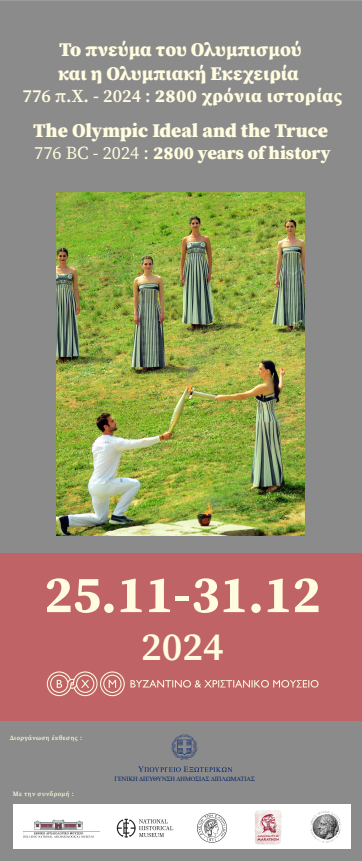
The exhibition was presented in Athens on November 26, 2024, at the Byzantine and Christian Museum. The exhibition was inaugurated by the former Deputy Minister of Foreign Affairs responsible for Greek Diaspora Affairs, Mr. Georgios Kotsiras.
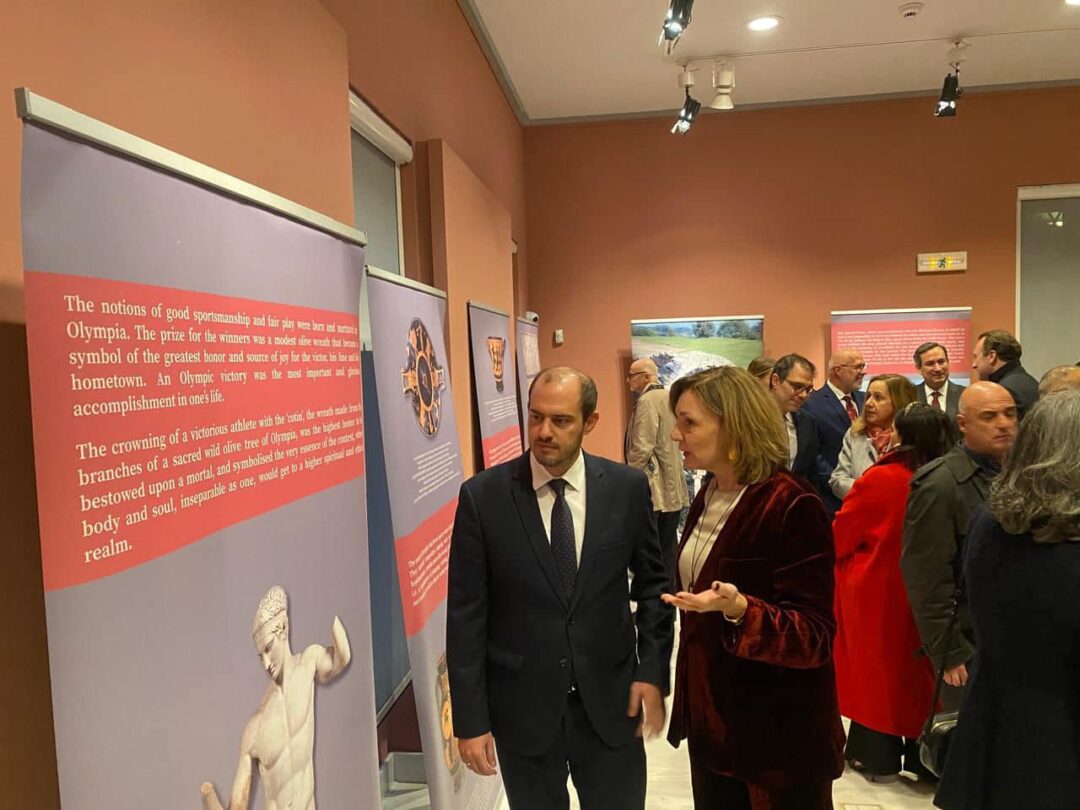
The exhibition abroad
The Permanent Missions of Greece in Geneva, New York (Permanent Mission to the UN), and Vienna (Permanent Mission to the OSCE), along with our Embassies in Montevideo, Madrid, Beijing, and Seoul held special events at chosen venues within their areas of jurisdiction, where the exhibition was presented with great success, garnering praise from visitors and the media in their respective countries.
Geneva
In Geneva, the Permanent Missions of Greece and France to the UN presented the exhibition from June 26 to July 2, 2024, at a venue at the UN headquarters in Geneva (Palais des Nations – Musée Olympique).
The opening ceremony was attended by the former President of the International Olympic Committee, Mr. Thomas Bach, and was addressed by, among others, the Greek Permanent Representative, Ambassador Ioannis Gikas, and the Director-General of the United Nations Office at Geneva, Ms. Tatiana Valovaya.

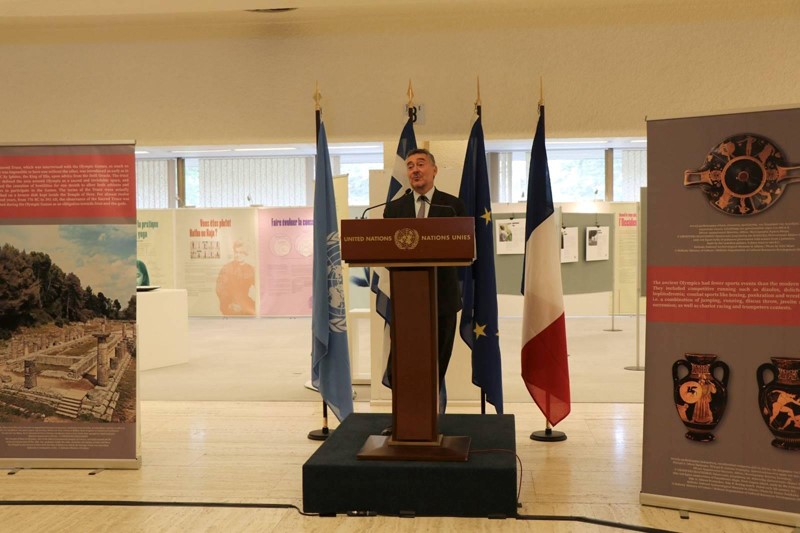
Vienna
In Vienna, the Embassy and Permanent Mission of Greece to the United Nations, in collaboration with the Permanent Mission of France, inaugurated the exhibition on June 5, 2024, at the UN International Center.
The event was addressed by the Ambassador of Greece, Mr. Georgios Iliopoulos, the Permanent Representative of France, Ambassador Délphine Hournau-Pouëzat, and the head of the E’ Directorate General for Public Diplomacy, Ambassador Aikaterini Koika, who was also responsible for curating the exhibits.
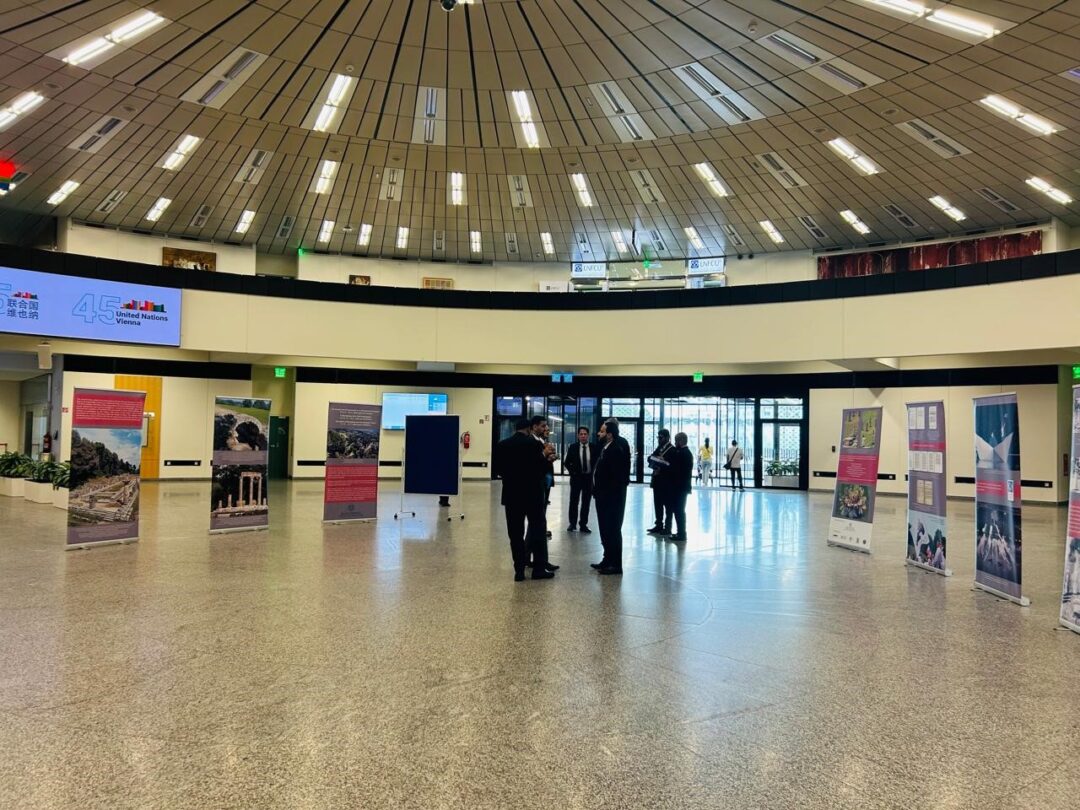
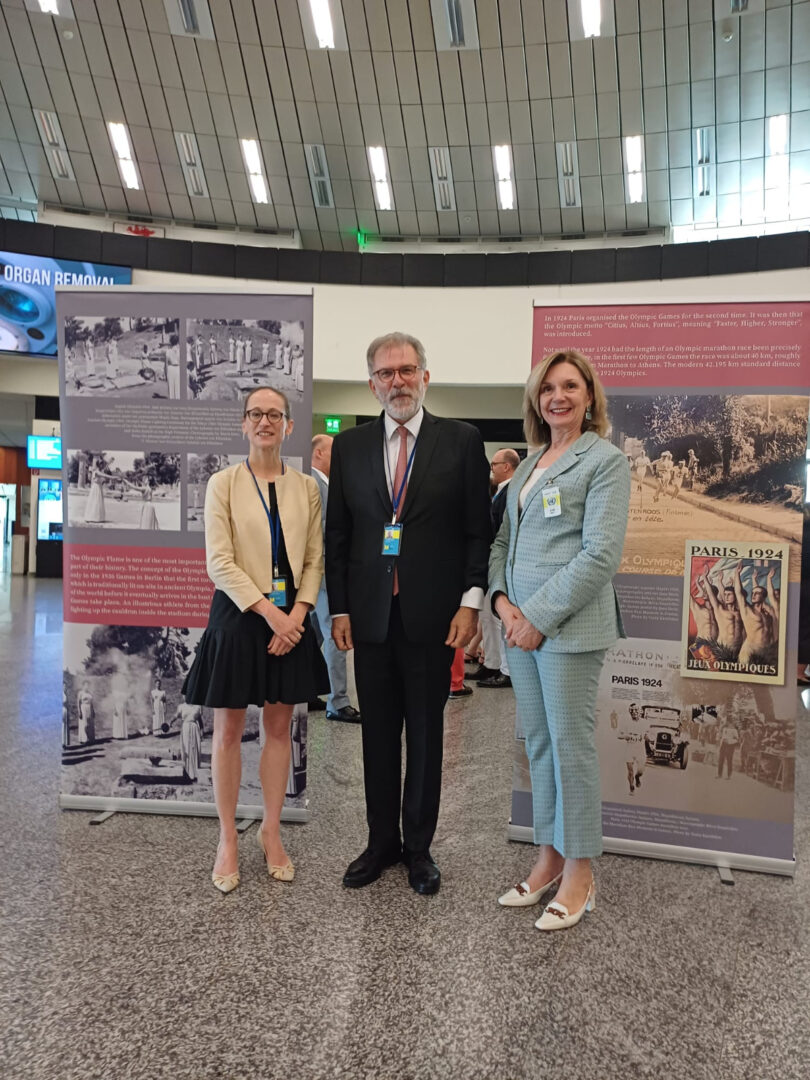
New York
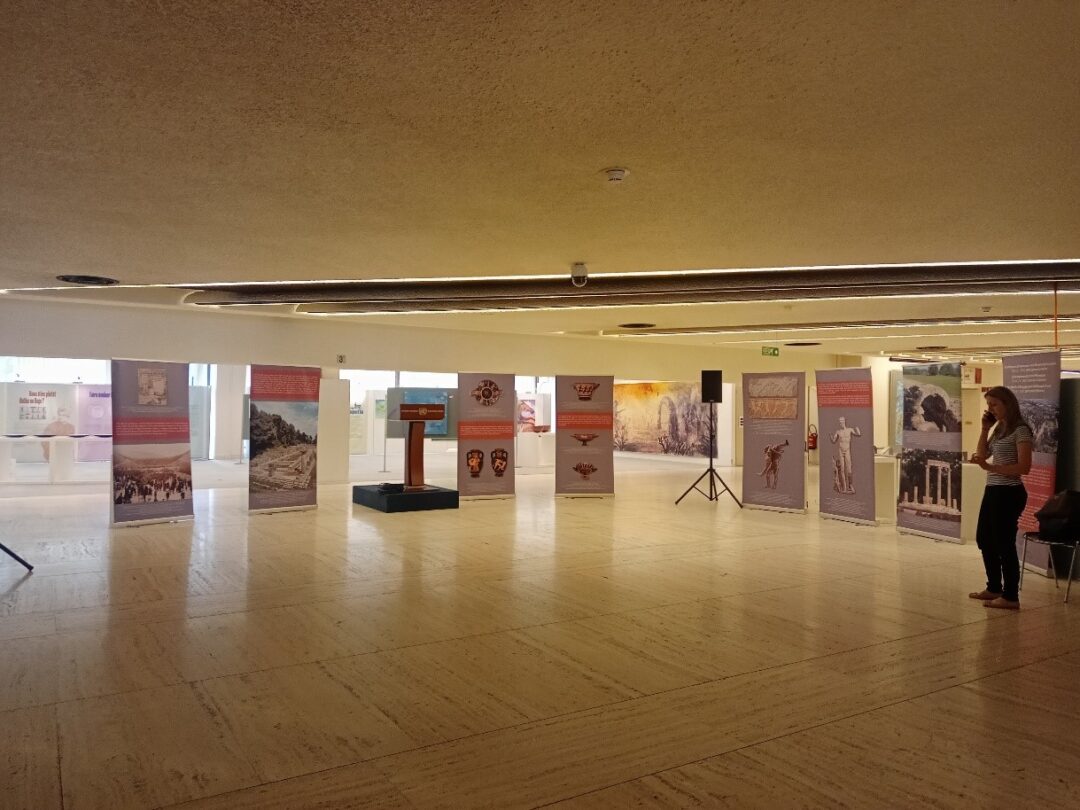
In New York, the exhibition was hosted at the UN headquarters and organized by the Permanent Mission of Greece in collaboration with the Directorate General for Public Diplomacy. It opened on October 22, 2024, and ran until November 1, 2024, attracting a large number of visitors and receiving rave reviews.
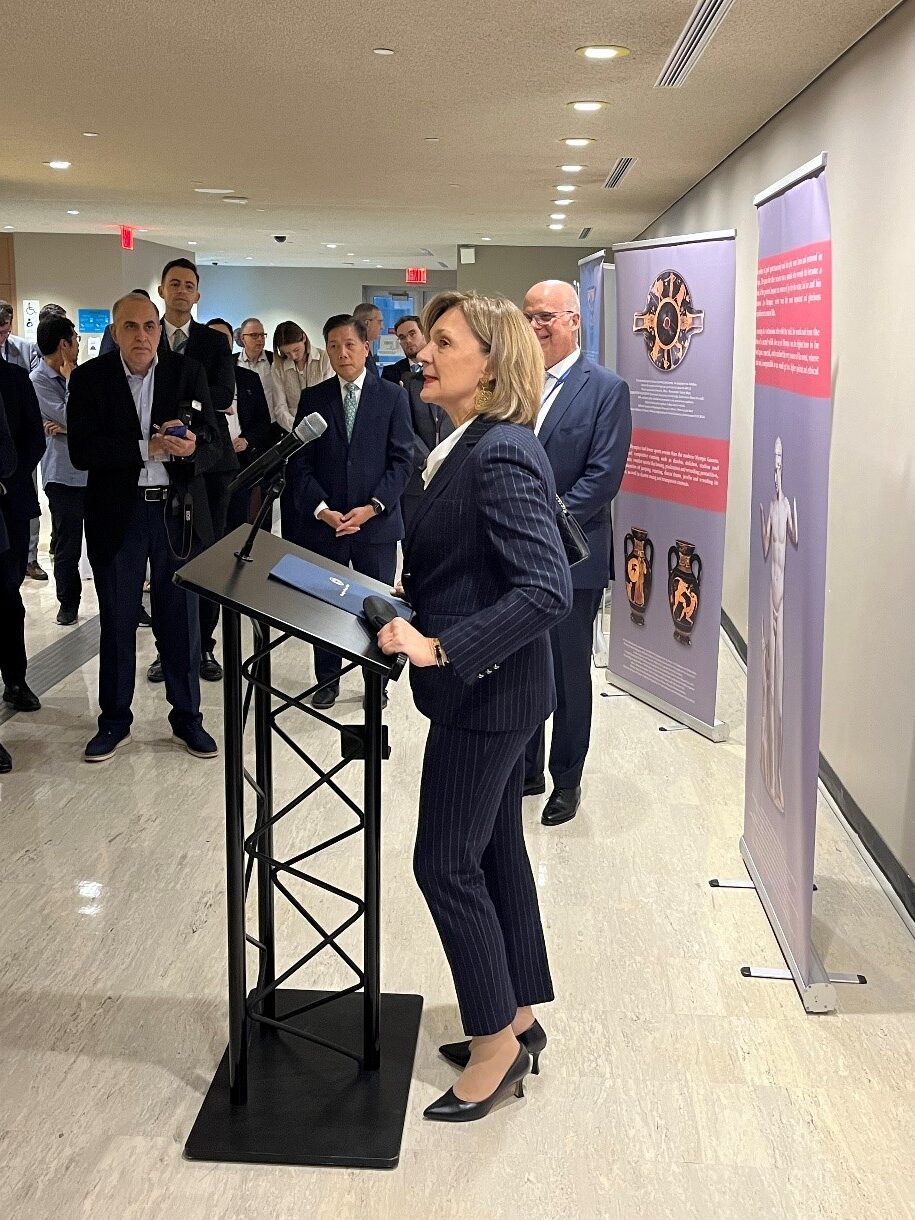
Andorra
To mark the 30th anniversary of diplomatic relations between Greece and Andorra (May 15), our Embassy in Madrid, in cooperation with Andorra’s Ministry of Foreign Affairs, organized an event during which (on May 15-16, 2025) the photographic exhibition was hosted at the Ministry of Culture of Andorra.

Montevideo
The exhibition in Montevideo, the capital of Uruguay, was presented from 7 to 14 October 2025 at the historic Palacio Santos, which also houses the Ministry of Foreign Affairs.
It was organized by our Embassy in Montevideo in collaboration with the Olympic Committee of Uruguay, the Pierre de Coubertin Committee of Uruguay, and the Directorate-General for Cultural Affairs of the Ministry of Foreign Affairs of Uruguay.
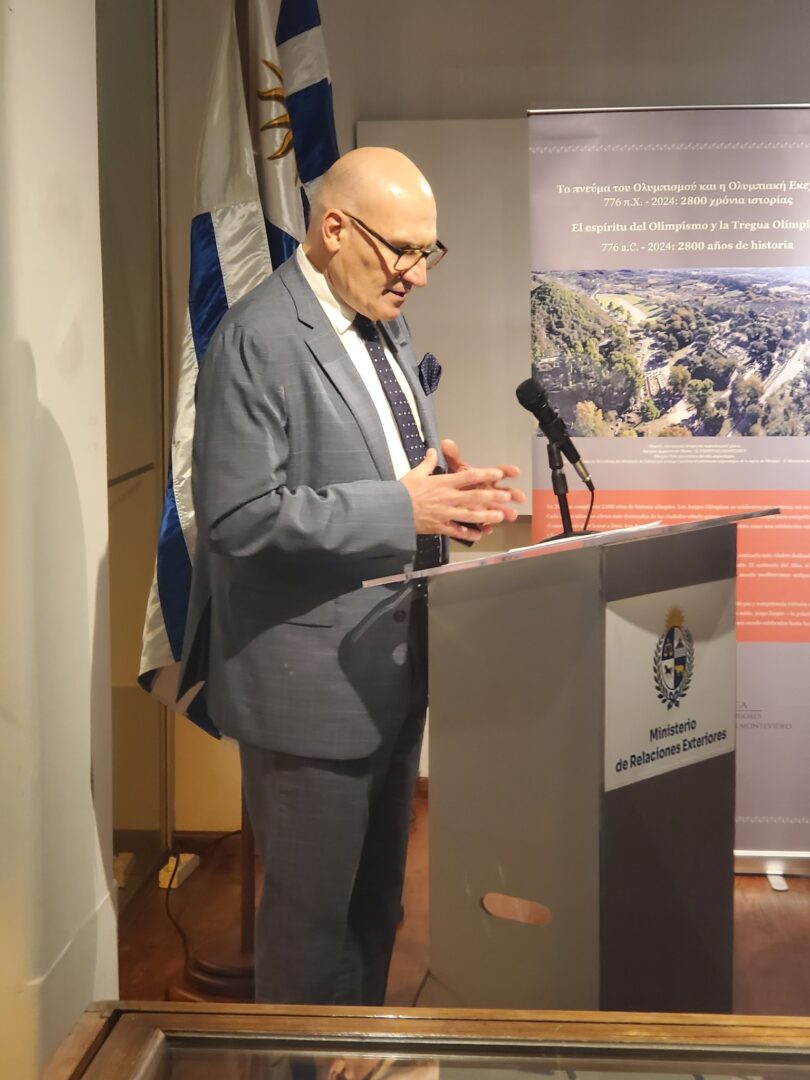
Beijing
In Beijing, the Greek Embassy and the Beijing Olympic City Development Association organized the exhibition, which opened at the Beijing Olympic Museum on June 13, 2025. The exhibition ran from June 13 to July 13, 2025.
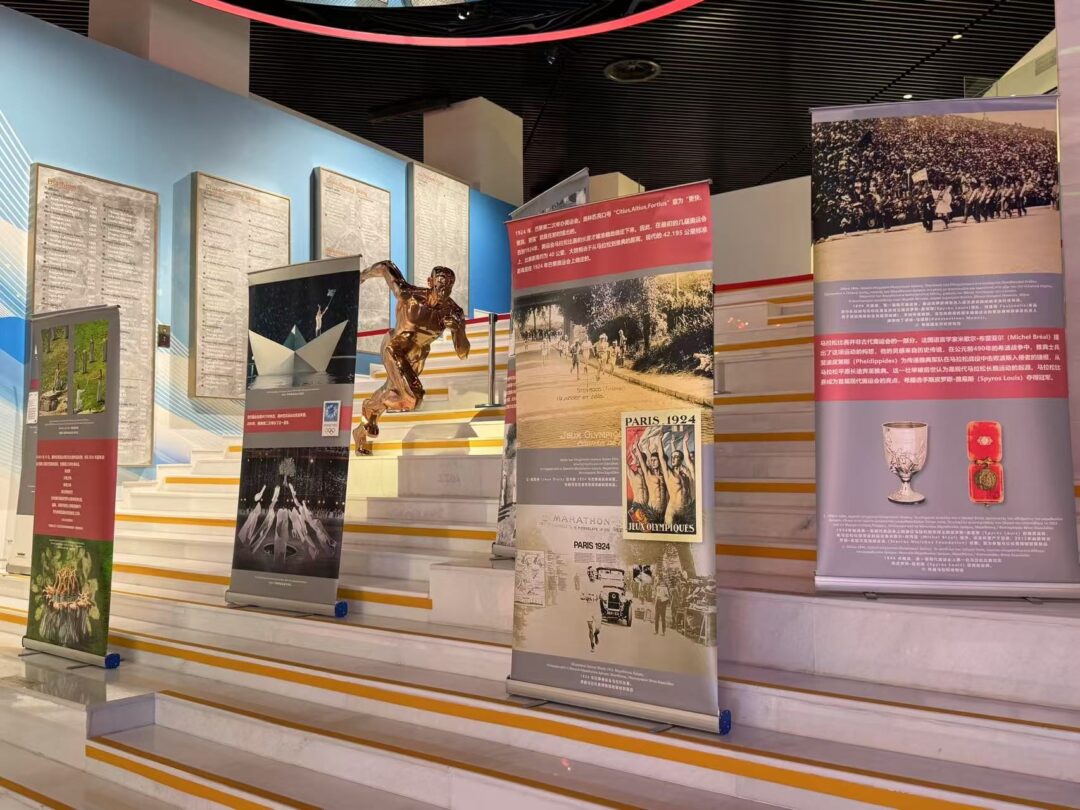
The exhibition was then presented in the city of Fenyang as part of the 2025 China Xinghuacun International Alcoholic Drinks Expo, where Greece was the guest of honor (September 29 to October 1).
In Chengdu, the capital of Sichuan province, the exhibition was initially organized and presented on the occasion of the 2025 Marathon by the Greek Embassy in China in collaboration with the Foreign Affairs Office of the Chengdu Municipal People’s Government on October 23-25, at the Chengdu Century City New International Convention and Exhibition Center. It was then moved to the Chengdu Sports Exhibition Center on October 26. The exhibition will remain there until December 26.
Furthermore, in the context of educational activities, and in collaboration with the Beijing Olympic Museum, the Exhibition was presented in Beijing from November 4 to November 10 at Qianjin Primary School. It should be noted that the texts of the Exhibition have been translated into Chinese.
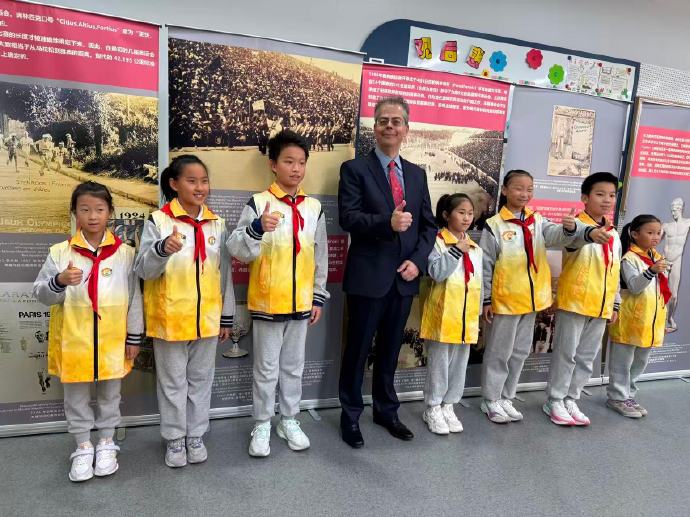
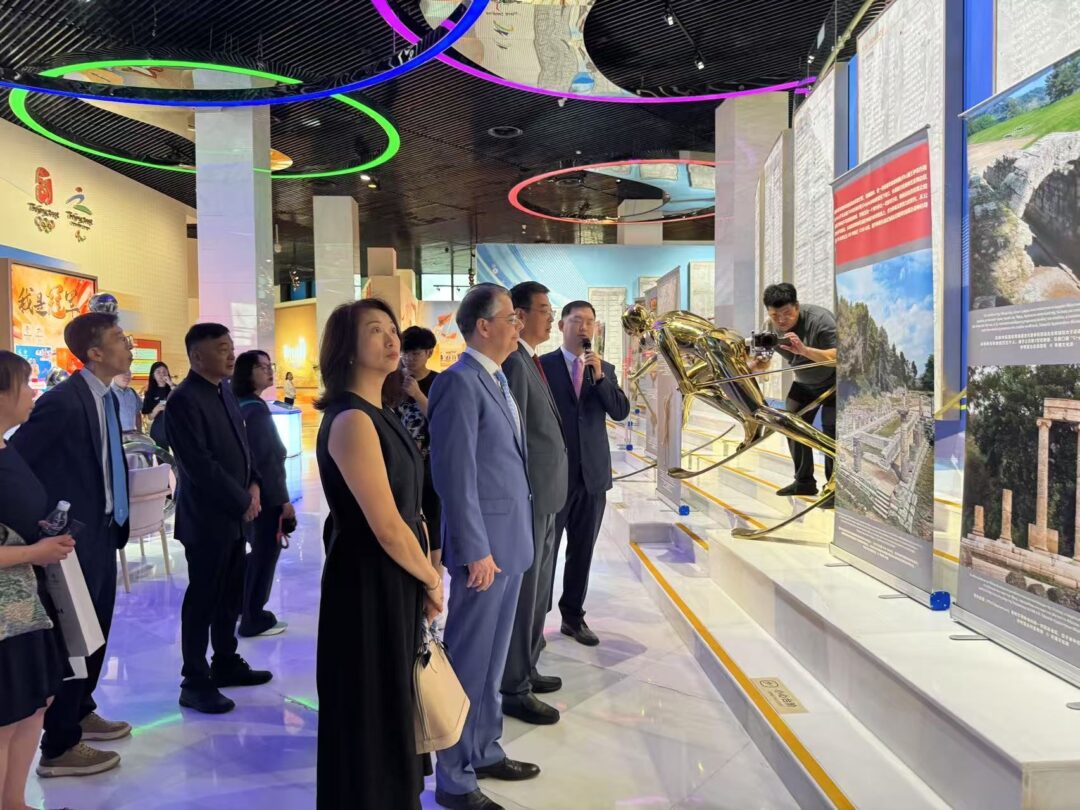
Seoul
In Seoul, the Exhibition was presented by the Embassy of Greece to Korea, to professors and students of Greek Studies at Hankuk University of Foreign Studies, Global Campus. The exhibition was hosted on November 17-21, 2025, in the Lobby of the Foreign Languages Building and on November 22-28 in the Lobby of the Humanities and Economics Building of HUFS University Global Campus, attracting the interest of many visitors and the media.
